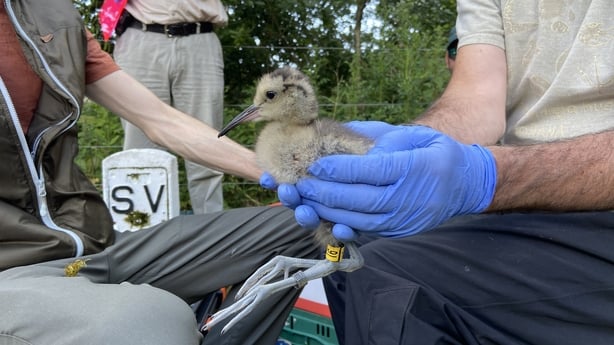The Government has announced a €25m call for proposals to help vulnerable wading birds in Ireland.
Populations of breeding waders, which include curlew, dunlin, lapwing and golden plover, have declined by as much as 98% in recent decades.
The funding will go towards a new European Innovation Partnership (EIP) project which aims to "secure existing wader populations at key sites and to support population recovery via wider landscape management and policy development".
Minister of State at the Department of Agriculture Pippa Hackett said: "Lapwing, redshank, curlew and snipe would have been a familiar sight in many parts of the countryside in the past, but are now reduced to very small, and, in some cases, critical numbers.
"Today's announcement will play a significant role in helping reverse those trends.
"We have used the EIP model over the past number of years to help bring farmers and other stakeholders together in local and regional groups, backed up with the financial and administrative support they need, and I am delighted we can now bring forward an EIP of this scale to help save some of our most endangered birds.
"Now is the time to reinforce those partnerships and to support our breeding waders - before it's too late."
An additional €5m has also been made available to the National Parks and Wildlife Service to implement "strategic conservation measures".

Speaking on RTÉ's Morning Ireland, Minister of State for Nature at the Department of Housing Malcolm Noonan said our breeding waders "really haven't fared very well and haven't been able to keep up with the pace of change across our landscape over the past 50 years".
An EIP "works with landowners [and] farmers to make conditions and improve habitat quality, deal with predators to help these birds, these really iconic birds who are ingrained in our culture and our songs, our poetry and try and help them to come back from the brink of extinction," he said.
He said a call will run until 22 January on the Department of Agriculture website.
"We're looking for landowners to come on board and join us in this great plan and project to get involved in land management issues and trying to deal with scrub clearance and deal with predation of these birds," Mr Noonan said.
"I think it's very significant because we've known, certainly from the past with a lot of our projects to date, that landowners and farmers in particular really love these schemes. They want to be involved in them and they become champions in the work that they do and they get a payment for it.
"So, it's a win for the birds, for these beautiful iconic birds, but also for rural communities, money that embeds itself into rural areas."

He added that success will be measured by the numbers.
"I think it's obviously by data and the improved breeding numbers, breeding pairs in particular, we saw some significant progress this year with the curlew and that was as a result of what we call head starting," Mr Noonan added.
"So, it's almost like a creche system where we take the eggs off the nest, bring them down with our partners down to Fota Wildlife Park, incubate the eggs and set the chicks free again back into the wild, so that type of approach.
"We're also using predation fencing, this is electric fencing that's run very successfully up in Inishowen in Donegal [and] in Boora in Co Offaly for the lapwing.
"We need this intensive type of management to try and help these species. So also in tandem of success, it's around communities being involved and becoming champions themselves, carrying out surveys, strategic actions and support.
"So, it's a wide range of support measures that we're going to put in with the communities, along with the actual conservation measures on the ground."

